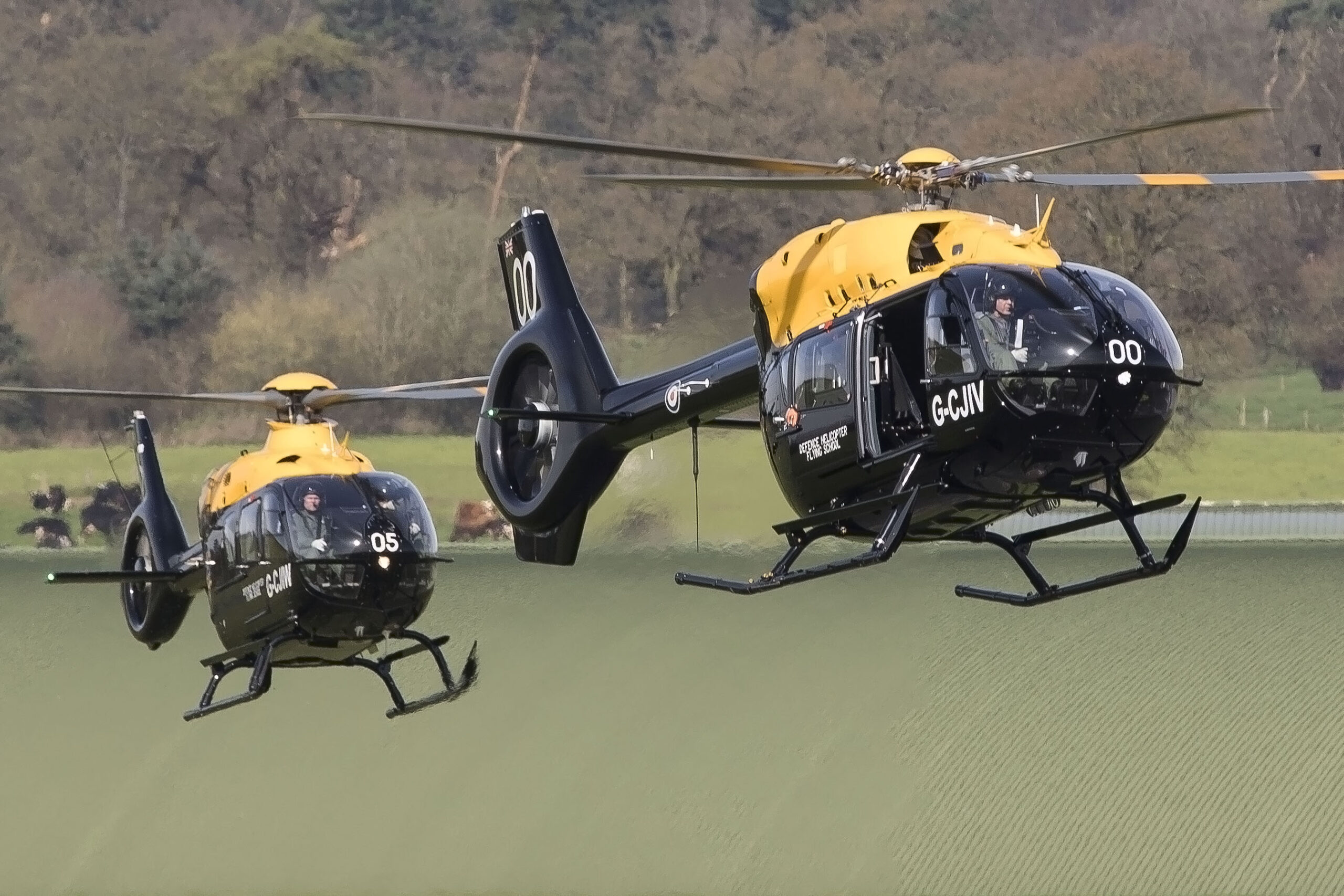
Airbus has proposed its H135 for the RCAF’s Future Aircrew Training program. The helicopter is now flying as a U.K. military trainer.
Photo: Airbus
Written for RCAF Today – 2021 Edition, Volume 12 (Advertorial)
Right now, there are over 760 Airbus helicopters flying in Canada with more than 220 operators. And in just a few years, a fleet of Airbus H135s might be training new military rotary-wing pilots for the Royal Canadian Air Force.
The RCAF is in the process of renewing its contracted aircrew training operations under the Future Aircrew Training (FAcT) program, consolidated into a single agreement that will last at least 20 years.
Training of fixed-wing and helicopter pilots together with Air Combat Systems Officers (ACSO) and Airborne Electronic Sensor Operators (AES Op), will be administered by a prime contractor that will operate the instructional services, aircraft maintenance and all aspects of the required infrastructure.
Two consortiums are vying for the FAcT contract, and Airbus has proposed its H135 to fulfill the requirements of the helicopter training component of the new program.
“The H135 is the reference for military helicopter pilot training around the world,” said Dwayne Charette, president and COO of Airbus Helicopters Canada, in an interview with RCAF Insight.
“I think the H135 just speaks to everything that the FAcT program is about. In the military instructional environment, Airbus helicopters have over 400,000 flight hours, training in a dedicated military training role.”
Deployed as the primary trainer for the Australian and United Kingdom militaries, the H135 is also in use by the German, Spanish and Japanese armed forces.
“The H135 is a proven platform. When you look at the capability and operating costs, it’s difficult to beat,” he added.
Beyond its military missions, the H135 is a global commercial success with over 1,400 of the light twin-engine utility helicopters delivered to 300 operators in 64 countries, and over 6 million flight hours in the fleet’s logbooks.
Fully certified for single- or dual-pilot Instrument Flight Rules (IFR) and night vision goggle (NVG) operations, pilots of the four-bladed main rotor, Fenestron-equipped helicopter fly with the H135’s advanced Helionix digital avionics suite that features a four-axis autopilot.
And while the capabilities of the H135 as a training aircraft will easily prepare new pilots for their transition to the RCAF’s complex operational helicopters – such as the CH-149 Cormorant and the CH-47F Chinook – the H135 excels as a full spectrum trainer, from basic ab-initio instruction through to multi-engine, IFR and NVG-crewed training.
“Pilots need to develop those fundamental flying skills – it’s not just about pushing buttons on a flight control system,” said Charette.
“With the H135, instructors can strip out the layers of automation, so that pilots can learn basic hands-and-feet flying skills. The RCAF needs well-rounded pilots at the end of the program so that they’re ready to move on to the complex helicopters in the RCAF’s operational fleets.”
Airbus Helicopters Canada’s headquarters in Fort Erie, Ontario, will become the focal point for the new fleet of FAcT H135s. Considered one of the multi-national company’s Centres of Excellence for engineering and composite manufacturing, it is the sole source supplier for eight different Airbus helicopter types.
The H135 fleet would be deployed to Southport Airport near Portage La Prairie, Manitoba, and Charette is confident that the helicopter will be ready for its year-round training role.
“Airbus Helicopters in Canada has always been customer focused, and we understand the realities of Canada’s climate, including the extremes of our winter weather. That’s not new to us – we have commercial helicopters that we’ve delivered that have had a very stringent requirement on the environment inside the cabin, when it’s -35C outside.”
Charette explained that once the Government of Canada finalizes the program’s requirements for the rotary-wing training aircraft, “any Canadian specificities that the H135 will require will be managed, developed and installed in Fort Erie before delivery of the helicopters.”
Opened in 1984, Fort Erie is the longest-standing Airbus facility is Canada, which now extends through four provinces, covering commercial aircraft – including the A220 final assembly line in Mirabel, Quebec – and defence and space sectors, all together bringing significant economic development to the country.
The H135’s fit for FAcT goes beyond its specifications, capabilities and flying qualities, to that feeling pilots get when they climb into a new aircraft for the first time.
Charette believes that student pilots and their instructors will be more than impressed when they set off for a training mission in an H135.
“They’ll instantly see that it’s a world-class aircraft. It looks formidable, and they’ll be training in a modern helicopter with the latest technologies. When I see H135s in the hangar, they’re a beautiful aircraft. It’s state-of-the-art.
I believe the H135 is the right platform for the FAcT mission. I’m Canadian, and I want to provide the best equipment – we owe it to the people who serve.”